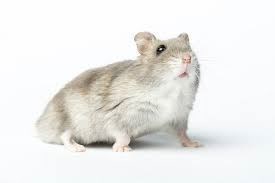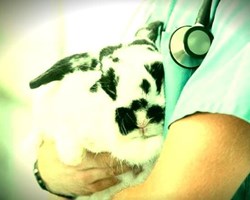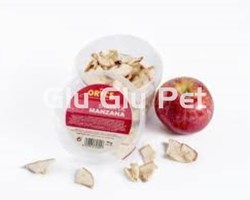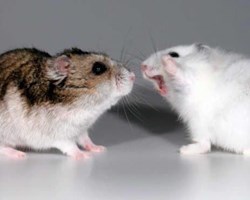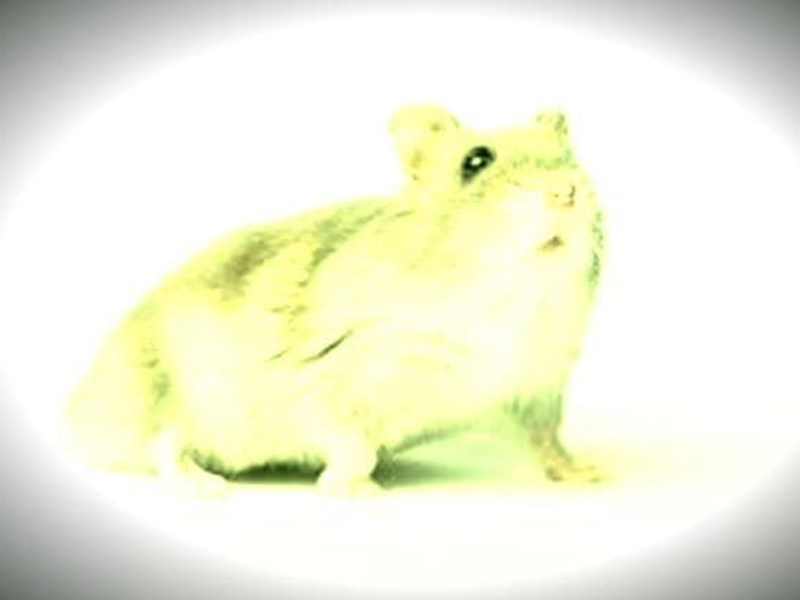
The Russian Hamster is surely the most widespread species of hamster in homes around the world.
They are rodents classified as dwarfs and because of their small size and their great sociability and docility, they have become the favorite of households with or without children.
This rodent usually measures a maximum of 10 centimeters, and has a soft coat whose colors mix brown and gray with black stripes on the back and sides, being white on the abdomen.
This small rodent comes from Siberian lands, specifically from the southwest, from the regions of Mongolia, Manchuria and Kazakhstan.
Currently they are pets that have become popular especially in Europe and North America.
You will also know it as Russian Dwarf Hamster, Siberian Dwarf Hamster, Djungarian Dwarf Hamster, Russian Moles or Russian Winter White Dwarf Hamster.
Being a variety of hamster from Russia, it is capable of surviving in temperatures down to minus 25 degrees Celsius, and is characterized by being an easy-care animal, with a calm temperament that usually gets along with others of the same species and even , with different pets.
The Russian hamster is small, measuring between 7 and 11 centimeters in length and weighing between 35 and 50 grams.
It has a stocky body and a short tail.
It usually has a black line on the back and spots of the same color on the shoulders.
The gut is usually white.
And just like their relatives, they have large extensible bags located on their cheeks that serve to store food and, above all, to transport it to their burrow.
These sacs are called pockets.
Its main characteristic with respect to other species of hamsters is that when cold winter arrives, they change their fur.
It goes from its natural color to a lighter and thicker one.
This is due to its Siberian nature.
When the cold arrives they need more hair to protect themselves and the light color they use as camouflage.
In the wild, these animals tend to hibernate.
Hibernation can last about a week, in which the hamster may give the feeling that it is dead, but in reality it is sleeping peacefully.
Normally it is in this period when they change their fur.
In captivity they may not hibernate and may not even shed.
If you are wondering how old a Siberian Dwarf can reach, it is usually between two years old and two and a half years old.
This does not mean that depending on the genetics of the specimen and how it has been cared for, the age could be extended to 3 years.
In the wild they do not usually live more than a year and a half.
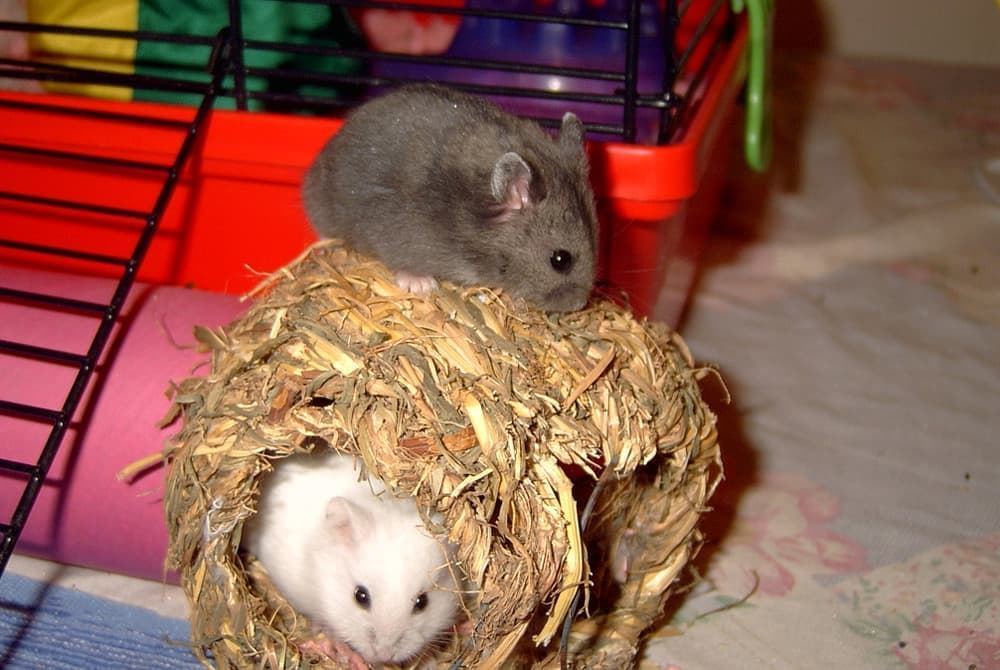
THE RUSSIAN HAMSTER AND ITS VARIETY OF COLORS:
In the wild, the original color of Russian hamsters is brown, brown, gray, white or blue.
And they usually have a dark dorsal stripe and a spot of the same color on the shoulders.
From these original colors precious mutations have been produced.
The 3 main mutations are the following:
- Nominal: It is the most common and has a gray color with a dark dorsal stripe.
- Sapphire: Blue-gray color that may not have the dorsal line.
- Pearl: beautiful white color that, like sapphire, may or may not have a dorsal stripe.
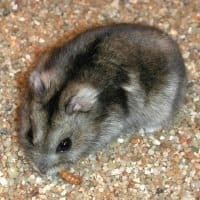
NOMINAL RUSSIAN HAMSTER.
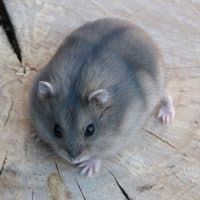
SAPPHIRE RUSSIAN HAMSTER.
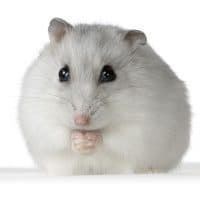
PEARL RUSSIAN HAMSTER.
Other color combinations can be Argente (sepia color with golden dorsal stripe), Cinnamon (greyish tone) and Mandarin (orange to yellow color).

RUSSIAN HAMSTER CHARACTER:
In general, this species is docile and you should not have problems because of its behavior.
Perhaps it is less recommended than the Syrian Hamster due to its small size.
This feature may not be the most suitable for inexperienced hands or children who could injure it.
A plus point is that it is very quiet.
Contrary to what happened, for example, with the Chinese Hamster, this species can live in small groups in which there is a male or in mixed pairs.
Groups of females is not advisable and groups of males is not feasible.
Avoid the coexistence of two males in the same cage.
It could have fatal consequences.
WHAT TO DO IF YOUR RUSSIAN HAMSTER BITES:
If you find yourself in the situation where your Russian hamster tries to bite you when you pick it up, it is usually because it has not been tamed properly.
Usually it's because he's nervous and insecure when you reach out to touch him.
The best thing is to tame it and get used to us from a very young age, dedicating a few minutes to it daily.
If the hamster is older, you can do the following so that it does not happen again and you can enjoy your pet in peace.
Put your hand carefully in the cage so that the animal gets used to our smell.
Repeat this for several days.
Let him smell you and above all do not make sudden movements that could scare the animal.
Put food of your choice in your hand so that it gains confidence and gets even closer and understands that there is no danger.
With time and a lot of patience you will get it to climb on your hand and stop biting you.
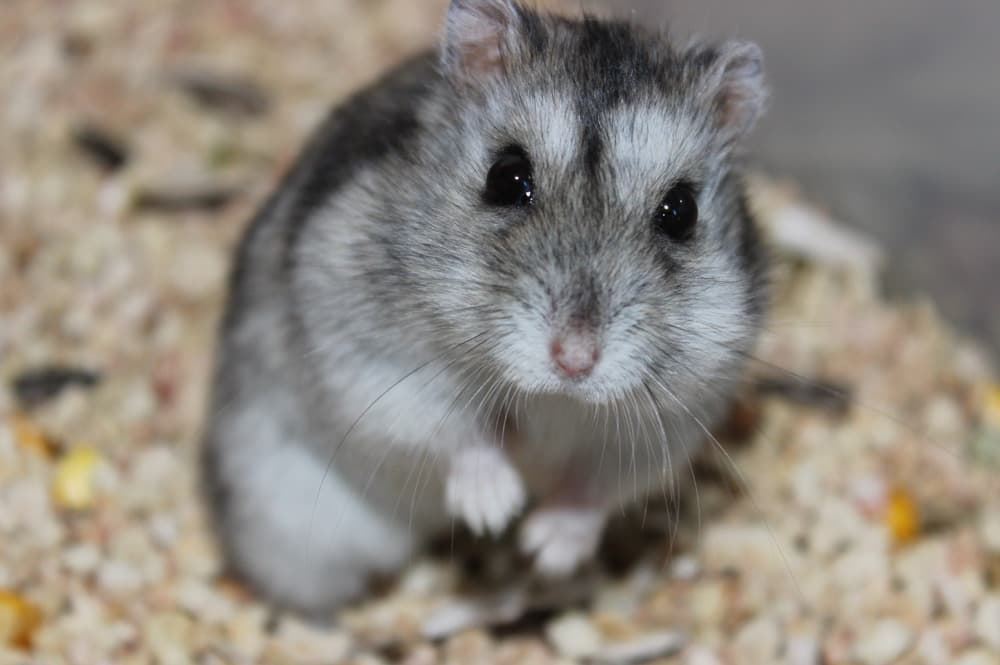
DIFFERENTIATE A MALE RUSSIAN HAMSTER FROM A FEMALE:
Like the other species of Hamsters, we follow the same steps to know if we have a Male or a Female Russian Hamster:
- Body Shape: Males have an elongated body and a beaked ass. Females are more rounded.
- Distance from the rectum to the vagina or penis. Males have separate anus and penis. The females have the anus and the vagina together.
- Carefully pick up the hamster by the neck.
- Flip it over to see the bottom.
- If you have another hamster you can compare the sizes. Males are usually larger than females.
- If you do not have another hamster you can notice the rear shape, if it is pointed it is male but if it is round it is female.
- You can see near the tail, if you see noticeable testicles it's male, but if you see 6 large nipples it's female.
- Another determining factor is the distance between the opening of the rectum to the vagina (in females) and the penis (in males).
HABITS OF THE RUSSIAN HAMSTER:
If you are thinking of buying a Russian Hamster, what you should know and it is very important that you know is that: it spends most of the day sleeping, so we recommend you place it in a quiet space in the house.
Your Russian hamster will be more active at night, a time that you should take advantage of to attend to it, play with it and give it affection.
THE CAGES AND THEIR CARE:
At Glu Glu Pet we think it is essential that you know if you want to give it the best care is that cedar sawdust releases an oil that can be harmful to the respiratory system of the Russian hamster, so opt for another variety.
Pine is not recommended either, it must be changed every week.
The best thing for its care is that you use biological beds, such as vegetable beds or shavings, which raise little dust.
Straw, on the other hand, usually has a high concentration of pesticides, which are very bad for them.
We recommend you:

The cage is going to be the home of the Russian hamster, so it should be large enough for the animal to be comfortable, with the bars slightly apart and made of a material that does not break.
You must clean its feeder and drinker every day, every two days change the vegetable base and clean the entire cage once a week, with very hot water and neutral soap.
Put your Russian hamster's home in a well-ventilated area and out of direct sunlight.
Introduce a feeder and drinker and a wheel (better without slits to avoid injuries to the legs) so that it can exercise.
A good measure to prevent your hamster from getting sick is to keep its cage clean.
Get it pristine by using a mild disinfectant or mild soap and water mixture, no harsh chemicals.
Then dry the cage well and add the sawdust. Do not forget to remove the remains of fruits and vegetables that have not been eaten at the time since if they are eaten later, they could go bad.
It is important that you take your Russian hamster out of the cage every day, play with it and pet it.
If you don't, it's easy for it to get into the wild and bite you.
The best time for this is late at night or late afternoon since we are talking about a nocturnal animal.
Remember, also, to include a plastic wheel (that does not have slits to prevent it from hurting itself) in which you can exercise whenever you want; also add a calcium tablet to gnaw.
The cage should be placed in a quiet place in the house, with ventilation and where it does not get direct sunlight.
- Sanicat Clean & Green - biodegradable paper substrate.
- INNER HAMSTER WHEEL.
- Drinker for small rodent 150ml.
- Ball or sphere for hamster 12cm.
- Ceramic feeder for small rodent 7.5cm.
- SAVIC plastic hamster feeder.
- Microdor Pets (Eliminator of odors generated by pets).
RUSSIAN HAMSTER NUTRITION:
At Glu Glu Pet you will find a specific feed for Russian hamsters, that is what your animal should eat.
You can supplement their diet with small amounts of raw vegetables, fruits, and vegetables several times a week.
You can supplement the diet of your Russian hamster with well-peeled and clean pieces of corn, broccoli, apple, nuts and seeds.
Sweet foods are prohibited as they could cause diabetes and lettuce, which gives you diarrhea.
In the same way, limit yourself to adding vegetables only 2 or 3 times a week and in small doses, since if you overdo it, the same thing will happen to you as with sweets.
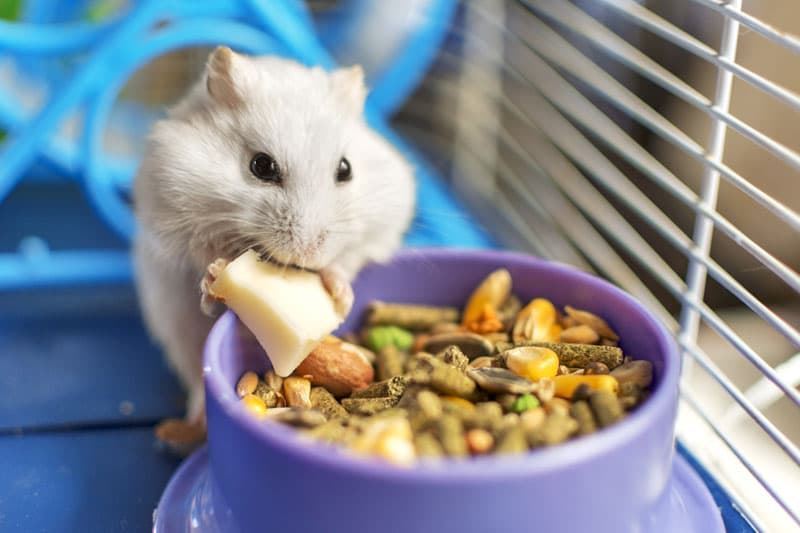
RUSSIAN HAMSTER CARE:
The Russian hamster's teeth grow constantly throughout its life, so it will have to gnaw on a specific toy to control that growth.
If your Russian hamster's hair begins to fall out (it can lose everything) it may be because it is weak or lacks vitamins.
At Glu Glu Pet we sell vitamins for them that are administered mixed with water.
The Russian hamster usually lives for a maximum of two years.
We recommend that you do not put male and female hamsters together in the same cage since they are capable of having up to five litters of hamsters a year and there will come a time when you will not be able to take care of all the animals, no matter how much you like them.
It is very dangerous to have the female hamster, the young and the male together, as the latter can attack the young and even eat them.

REPRODUCTION OF THE RUSSIAN HAMSTER:
If you want to have two hamsters, we recommend that you do not put the male and female together in the same cage if you do not want them to reproduce, as they can have up to five litters each year.
Gestation lasts a maximum of 21 days.
At birth, the pups weigh only two grams, and after a week of life they stop feeding on mother's milk to start consuming solids.
They reach their full independence four weeks after birth.
If you have a litter of newborn hamsters, you should separate them in a cage with the mother, since the male can eat them while they are defenseless.
If you do not have the appropriate knowledge, we do not recommend raising the Russian hamster.
POSSIBLE DISEASES OF THE RUSSIAN HAMSTER:
These hamsters are allergic to the oils in cedar and pine shavings.
It can cause digestive and respiratory problems.
Stomach problems can be due to excessive consumption of nuts, vegetables or fruits.
Provide plenty of water and a mix of solid dry food.
Hamsters can get many human illnesses, such as colds.
If you are sick take precautions before handling your pet.
Check teeth and nails regularly to avoid major problems.
